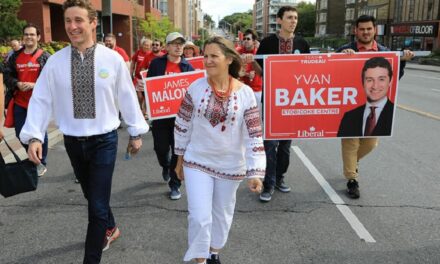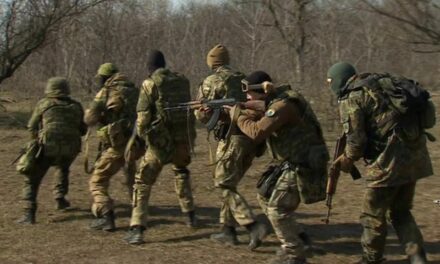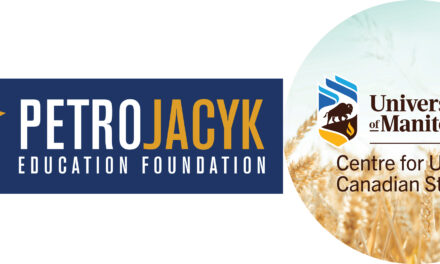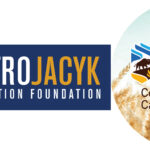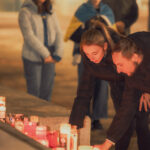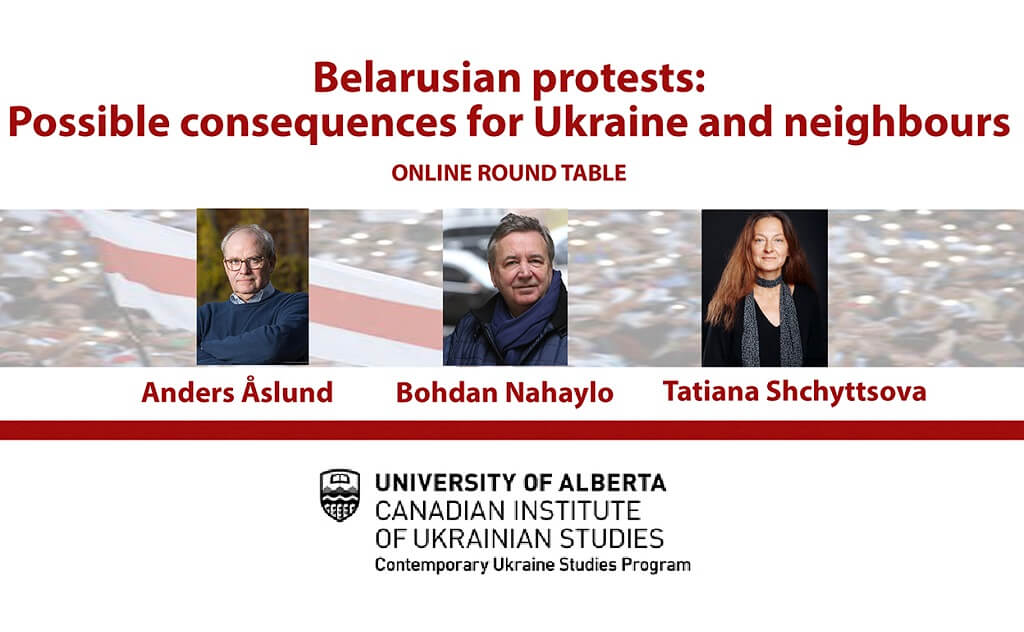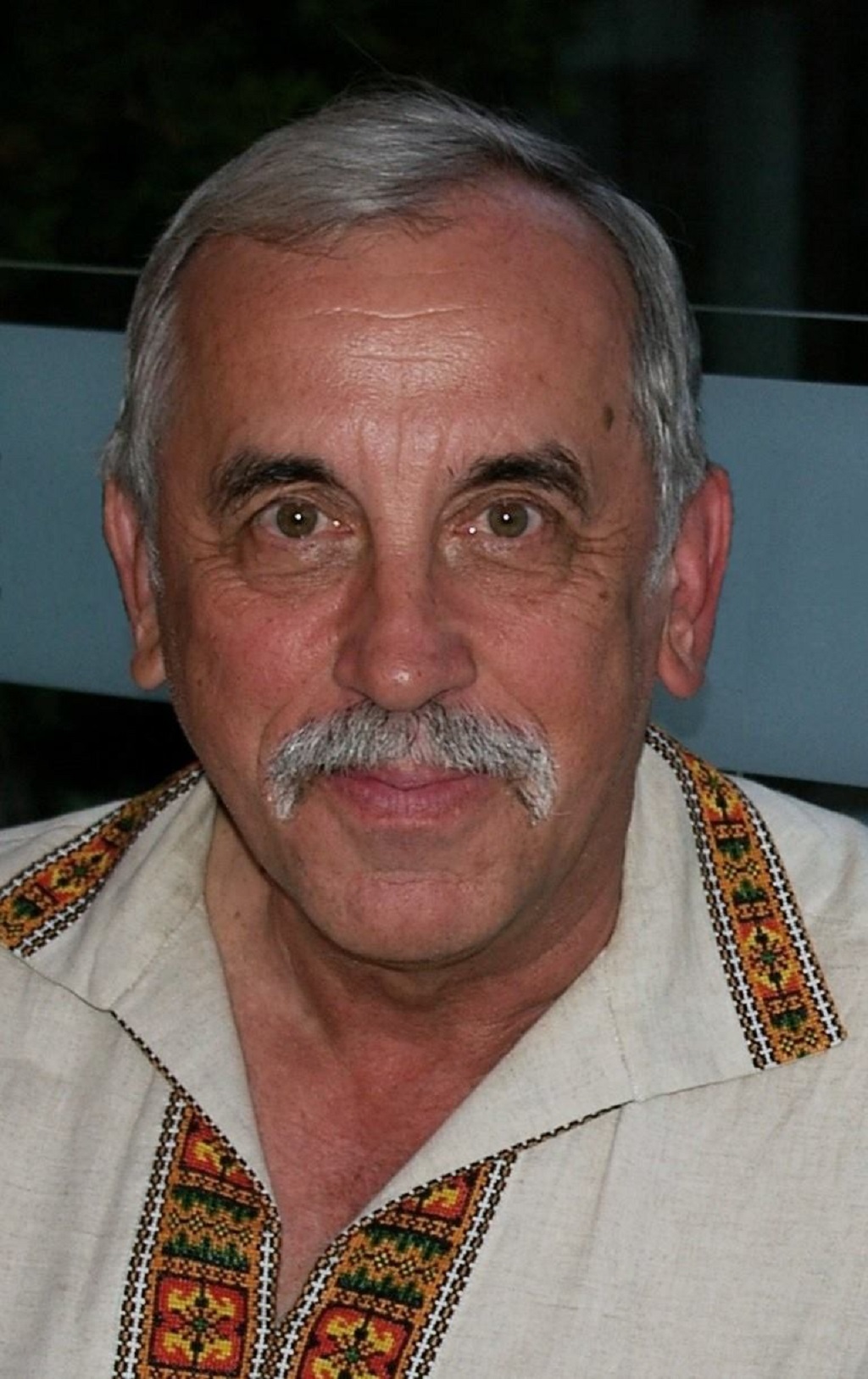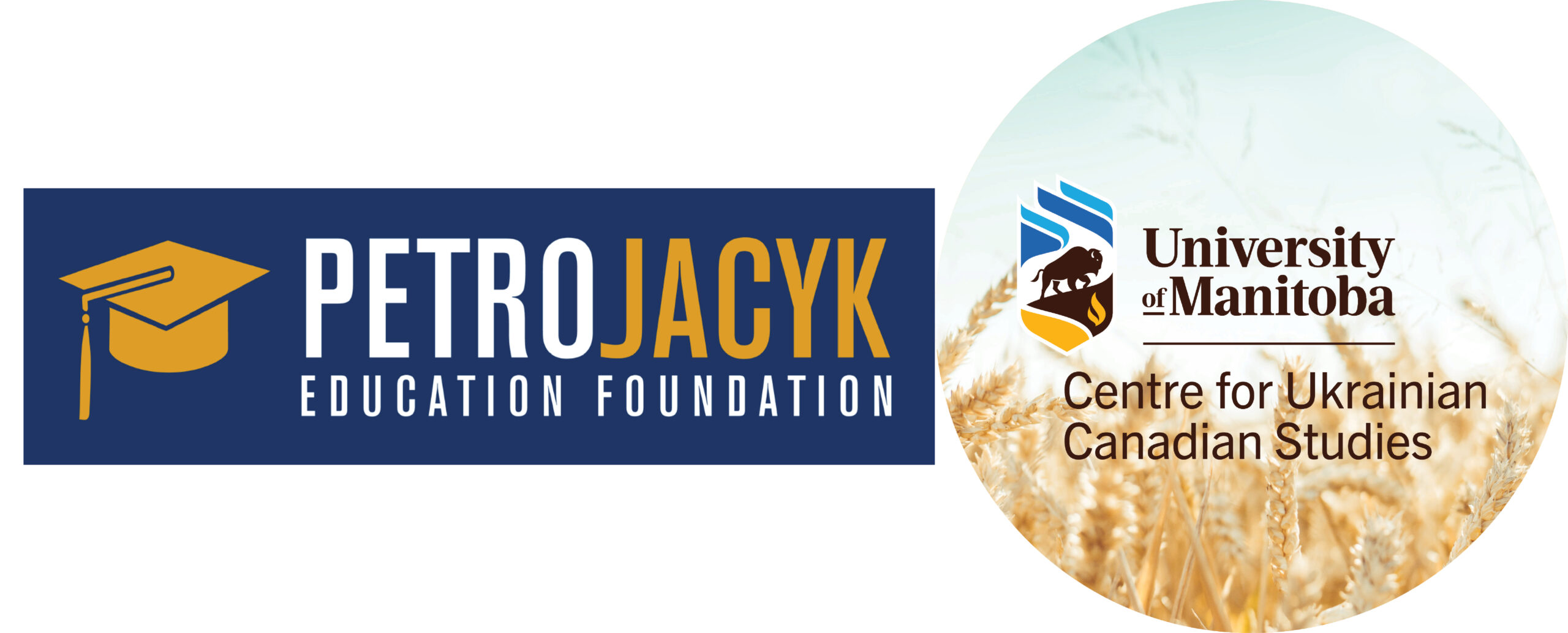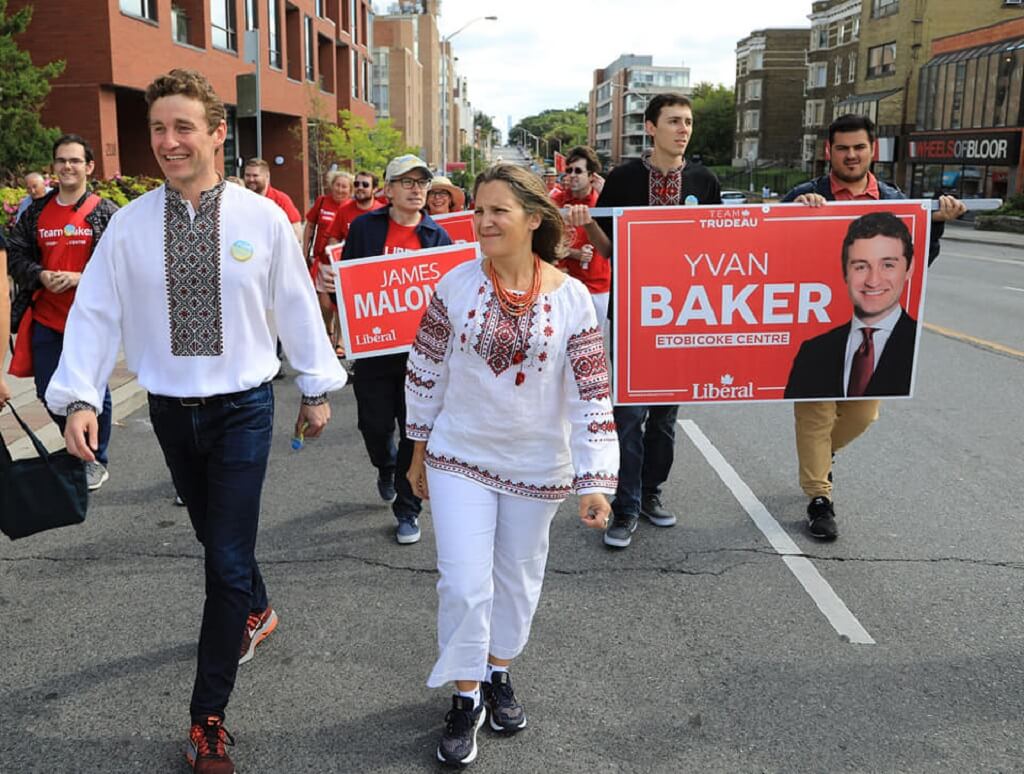Marco Levytsky, National Affairs Editor.
What started out as a protest against rigged elections is turning into a revival of Belarusian national consciousness, said panelists at an online round-table discussion on the Belarusian protests and possible consequences for Ukraine and other neighbours, September 4.
“What we’ve seen in the last week is the birth of the Belarusian political nation…We have seen something miraculous that harkens back to 1917 [the unsuccessful struggle for independence – ed.],” said Bohdan Nahaylo, a British-Ukrainian journalist, political analyst and writer, during the webinar sponsored by the Canadian Institute of Ukrainian Studies.
He noted that for dictator Alyaksandr Lukashenka, Belarusian history involves the Second World War partisan movement and nothing before that, but the protestors have adopted the red and white flag of independent Belarus from 1991 to 1995, which symbolizes a national revolution.
“For these young people and even the older people, the white-red-white flag symbolizes a nation that was denied its statehood in 1918-19 and has become so prominent without being emphasized,” he added.
Tatiana Shchyttsova, a professor in the Department of Social Sciences at the European Humanities University in Vilnius, Lithuania (the Belarusian university-in-exile), and the academic director of its Center for Research of Intersubjectivity and Interpersonal Communication, agreed the protests constitute the revival of a national agenda.
However, this national agenda comes in a much different form than the national agenda of the old opposition figures, which promoted ethnic nationalism as opposed to civic nationalism but that couldn’t unite all Belarusians. The new nationalism is based both on the Belarusian cultural ethos as civic resoluteness, she said.
Since Lukashenka replaced the red and white flag with that of the former Belarusian Soviet Socialist Republic after assuming power, the protesters needed an alternative national symbol and found it in the former flag.
Shchyttsova noted that the nationwide protests revolve around three basic demands – to stop the violence perpetrated by authorities, to free political prisoners, and to hold free elections.
Their objective is to build a society based upon justice and human rights.
And while the protesters do not see this as being a choice between East and West, there are increasing calls for an end to the subjugation of Belarus to Russia, she said.
Nahaylo agreed, noting that “after the tortures, after the massive arrests, who wants to live in a dictatorship. And what is [Russian President Vladimir] Putin’s model – a dictatorship”.
Anders Åslund, a senior fellow at the Atlantic Council and an adjunct professor at Georgetown University, said that Belarus is suffering from complete economic stagnation with only enough foreign currency reserves to last a few months.
This leaves the country with only two alternatives – adopt the standard International Monetary Fund (IMF) program for economic recovery, or get bailed out by Russia and fall even further under Moscow’s grip.
But an IMF agreement is impossible as long as Lukashenka is in power because to get such an agreement, you need a normal government, which that regime is not.
Thus, should a new government come to power, it should instantly start negotiations for an IMF agreement.
“An IMF agreement is not just an IMF agreement. It’s a choice between Russkiy Mir [the Russian World] and the West,” he stated.
Both Shchyttsova and Nahaylo said that the Belarusian protests are quite different from the Maidan revolutions in Ukraine because they are nationwide, as opposed to being localized in the capital and unite both East and West parts of the country.
Nahaylo said Belarusians are not as emotional as Ukrainians and tend to be more relaxed and closer to the Baltic nations in temperament.
Regarding Ukraine’s response, Nahaylo said President Volodymyr Zelenskyy started with a measured and tactful response, but took an increasingly radical stance as the repressions continued, removing Ukraine’s ambassador to Belarus.
Aslund noted that Ukraine finds itself in a complicated situation because with Moscow and Kyiv imposing sanctions on each other, Belarus has become a surreptitious conduit for trade between the two countries.
Asked whether there is any chance of Lukashenka removing himself as a result of the protests, Nahaylo said that’s a non-starter because “the guy is a megalomaniac and probably a psychopath, too. There is no way he is going to remove himself from the scene.”
Aslund said that when it comes to repression, Lukashenka is far more brutal than Putin. Putin acts slowly and systematically while Lukashenka lashes out in all directions.
Moderator Frank Sysyn, Director of the Peter Jacyk Centre for Ukrainian Historical Research at CIUS, said that while some people say Belarus is close to Russia, “I don’t think it’s chauvinist to say there is no other nation closer to the Belarusians than the Ukrainians, historically, culturally and linguistically”.
Introductory remarks were also delivered by Natalia Khanenko-Friesen, Director of the CIUS and Professor and Huculak Chair, Department of Modern Languages and Cultural Studies, University of Alberta, Volodymyr Kravchenko Director of the Contemporary Ukraine Studies Program at CIUS.
Technical details were arranged by Oleksandr Pankieiev.
Share on Social Media






